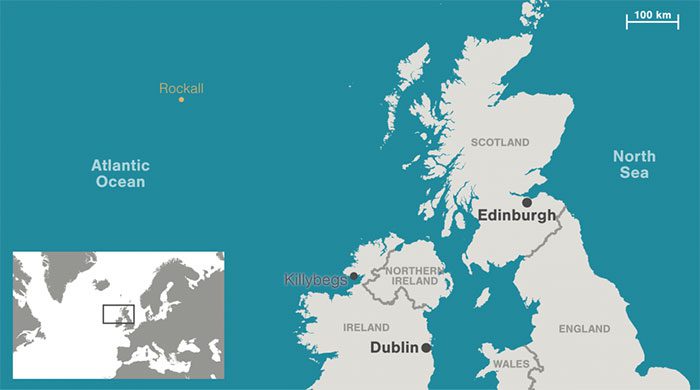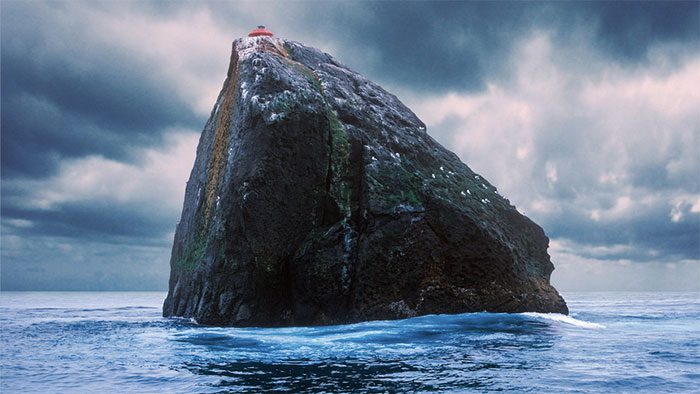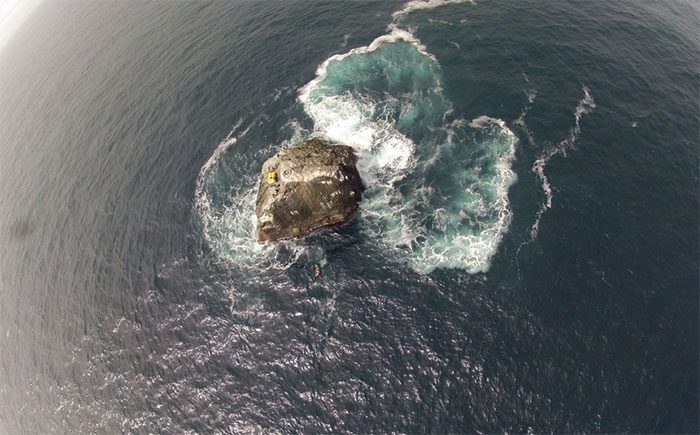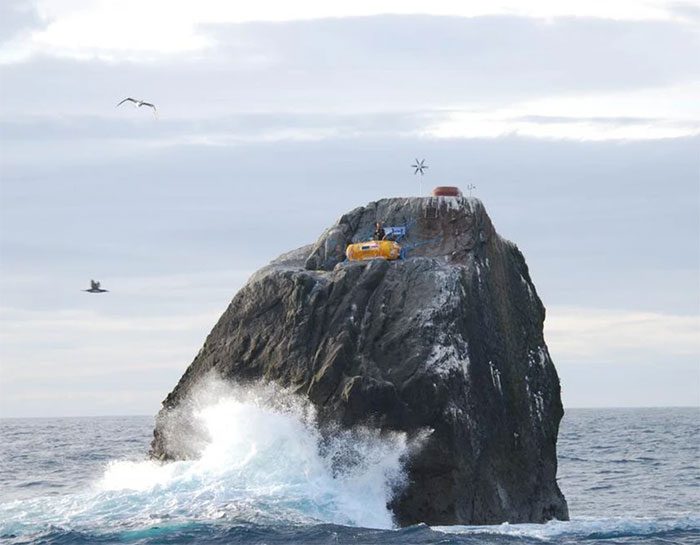Rockall is a very small rocky island, covering an area of approximately 570 square meters, uninhabited, and located far from the European mainland in the North Atlantic Ocean.
In the frigid waters of the North Atlantic, there is an uninhabited volcanic rock island, situated 304.1 km west of St. Kilda and 424 km northwest of Ireland. Due to natural changes such as tides and ocean currents, the precise location of this area can be difficult to determine.

The name Rockall originates from an Irish folk term from the Middle Ages. Legends speak of a mysterious rock named “Rocabarra” that would appear before the end of the world. This rock was mentioned by Scot Martin in 1703, linking it to the existence of the “Rocabarra” legend.
The waters surrounding the island are rich with coral reefs and often experience strong winds, with waves exceeding 10 meters high and winds reaching speeds of 62 km/h crashing against the island. There is no soil on the island, nor is there a freshwater source; instead, it consists solely of exposed granite rocks, which is why we refer to Rockall as one of the most desolate and inhospitable places on Earth.

Rockall is the visible remnant of an ancient volcano. This area lacks clean water, making it impossible for humans to live here. The only inhabitants of this island are puffins, northern guillemots, and other birds that perch on Rockall during their long flights. Some bird species even build nests on the cliffs.
Rockall is far from shipping routes and human civilization. This island is devoid of vegetation and is very small; it is a remnant of a volcano and completely uninhabited. However, this secluded island has caught the attention of the United Kingdom, Ireland, and Denmark. Representatives from all four parties believe that there are oil and natural gas reserves worth up to 160 billion USD buried beneath the island’s continental shelf.
The earliest records of the island date back to the late 15th century. On September 8, 1811, Basil Hall, captain of the Royal Navy ship Endymion, led a small team to successfully reach the summit of Rockall under extremely harsh weather conditions. It is said that when they first spotted the island, they thought it was a ship because the top of the rock was covered in white bird droppings. As they got closer, they realized it was a small island.
Captain Basil discovered a low stone step on the southwest side of the island, from which he ascended to the peak and measured the height of the cliffs as well as the depth surrounding the island. Through their findings, they discovered that the ocean depth reached over 2,000 meters. They speculated that it could have been formed by a volcanic eruption and that the point where it meets sea level must be part of the volcano’s rim.
In 1824, a deadly accident occurred on the rocks near Rockall. In 1904, the steamship SS Norge ran aground on the rocks near Rockall, resulting in over 600 fatalities.

For centuries, Rockall has been the site of numerous mysterious accidents. In 1686, a fishing vessel ran aground nearby. In 1812, the research ship “Leonidas” sank not far from there, and 12 years later, the “Helen of Dundee” met the same fate. In 1904, a Norwegian ship also struck rocks on its way to New York, resulting in 635 deaths, while 150 people survived.
On September 18, 1955, a Royal Navy helicopter landed on Rockall, hoisting the British flag on the island and marking it as a territory. This act could be considered the last colonial expansion of the UK. On February 10, 1972, Rockall ceased to be an independent territory and officially became part of Harris Island, Scotland.
On May 16, 1985, a survival expert named Tom McLean resided on the island until July 4 to support the British claim of sovereignty over Rockall.
In 1997, three activists from Greenpeace decided to go to Rockall to protest against oil drilling in the area. Greenpeace believed that oil extraction would cause significant environmental harm. They aimed to use this action to draw public attention to environmental issues. However, by 1999, Greenpeace was forced to leave due to a lack of funding.

Rockall was annexed by the UK in 1972 and became part of Harris Island in Scotland, an area still disputed by Ireland, Iceland, and Denmark. As both the UK (1997) and Ireland (1996) ratified the United Nations Convention on the Law of the Sea, the treaty does not recognize Rockall as territory controlled by any nation, although both the UK and Ireland claim it as their own.
Currently, Rockall has been confirmed to lack strategic significance, as the waters surrounding it may contain abundant oil and natural gas resources. Denmark, Iceland, Ireland, and the UK are in negotiations but have yet to confirm their respective claims.


















































